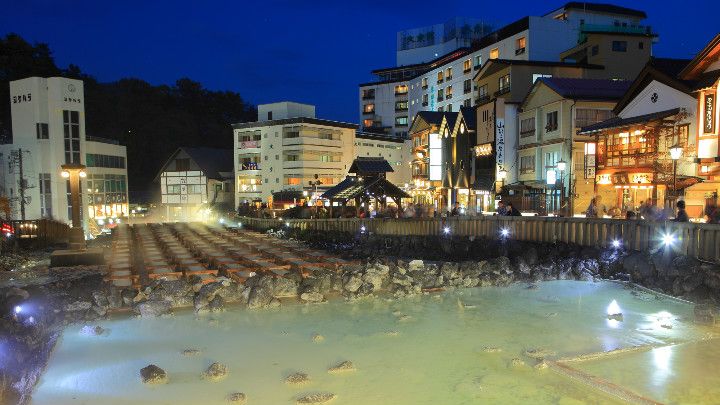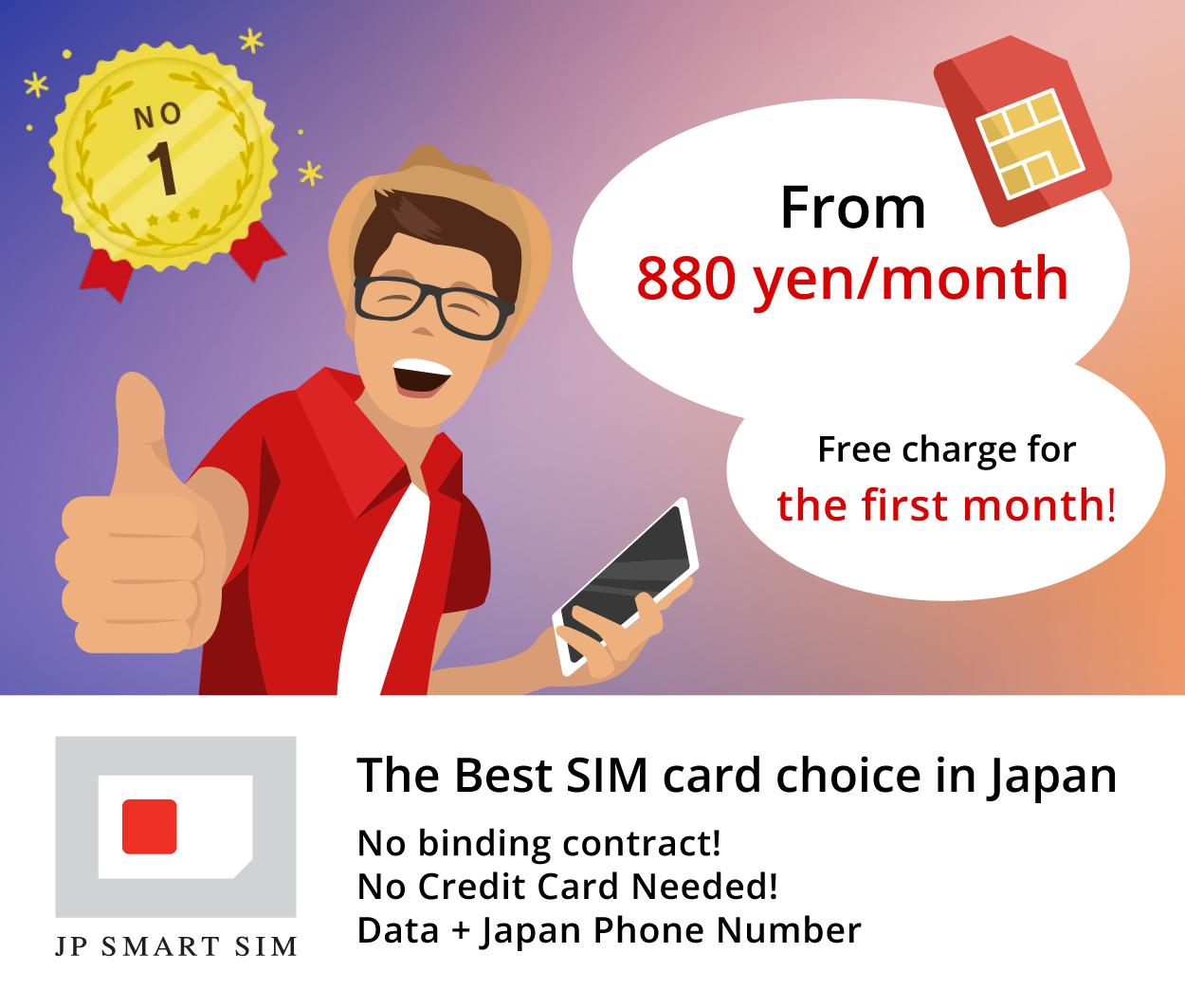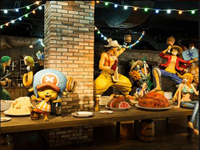Kusatsu Onsen


(Source: kazukiatuko / PIXTA(ピクスタ) )
Symbol of Kusatsu: Yubatake
Yubatake, located at the heart of the onsen town, serves for temperature adjustment of the onsen water. 4,400 liters of steaming hot spring water passes through the long, wooden pipes every minute, cooling the temperature and being passed on to the different onsen facilities. You should go explore the area during night as well, as the Yubatake at Kusatsu gets illuminated after dark, creating a different atmosphere from the daytime.

(Source: いま明かす! 旅を通じて広がった世界100景Y&Y )
Top Open-air Bath in Japan, Nishi no Kawara Rotenburo
Nishi no Kawara Rotenburo, located in the Kusatsu Onsen district, is one of the largest open-air baths with a total of 500 sq. meters combined both men's and women's baths. The water of this onsen comes from a spring called Bandai Gensen, which has an especially high temperature even within Kusatsu Onsen, and is said to have excellent disinfectant and anti-inflammatory effects.

(Source: スポーティに!)
Kusatsu's Specialty: Yumomi at Netsu no Yu
The "yumomi" at Netsu no Yu is so famous that it's the first thing that comes to mind when thinking about Kusatsu Onsen. This technique is used since the Edo period to cool down the hot spring water that is too hot to bathe in, without diluting it with cold water and therefore preserving its quality. Today, this ritual is introduced everyday in a show called Yumomi to Odori (yumomi dance).

(Source: Instagram)
Experience a Traditional Bathing Style
At onsen facility Otaki no Yu, you can experience a traditional bathing style called awase-yu, which is typical to Kusatsu Onsen with high temperature springs. This bath is divided into sections and designed to naturally cool down the water as it moves through them, without compromising its quality. This way you can move gradually towards the hotter sections, as your body gets used to the temperature.

(Source: 徒然草津)
Nishi no Kawara Dori
Manju (steamed buns filled with sweet red bean paste) stores, souvenir shops and restaurants are densely lined up on both sides along the street Nishi no Kawara Dori near the Yubatake. The street is only a 10 to 15-minute walk at a relaxed pace, so you should stop by on your way to visiting the Yubatake.

(Source: KamaDa / PIXTA(ピクスタ) )
Specialty Gourmet of Kusatsu Onsen
A specialty of Kusatsu Onsen that you can absolutely not miss is onsen manju. There are many stores that sell onsen manju, and each one has its own recipe and flavor, such as using spring water for the dough or for the steaming process, so it's fun to compare the different stores and their manju.

(Source: sisonicのブログ)

(Source: kazukiatuko / PIXTA(ピクスタ) )
Symbol of Kusatsu: Yubatake
Yubatake, located at the heart of the onsen town, serves for temperature adjustment of the onsen water. 4,400 liters of steaming hot spring water passes through the long, wooden pipes every minute, cooling the temperature and being passed on to the different onsen facilities. You should go explore the area during night as well, as the Yubatake at Kusatsu gets illuminated after dark, creating a different atmosphere from the daytime.

(Source: いま明かす! 旅を通じて広がった世界100景Y&Y )
Top Open-air Bath in Japan, Nishi no Kawara Rotenburo
Nishi no Kawara Rotenburo, located in the Kusatsu Onsen district, is one of the largest open-air baths with a total of 500 sq. meters combined both men's and women's baths. The water of this onsen comes from a spring called Bandai Gensen, which has an especially high temperature even within Kusatsu Onsen, and is said to have excellent disinfectant and anti-inflammatory effects.

(Source: スポーティに!)
Kusatsu's Specialty: Yumomi at Netsu no Yu
The "yumomi" at Netsu no Yu is so famous that it's the first thing that comes to mind when thinking about Kusatsu Onsen. This technique is used since the Edo period to cool down the hot spring water that is too hot to bathe in, without diluting it with cold water and therefore preserving its quality. Today, this ritual is introduced everyday in a show called Yumomi to Odori (yumomi dance).

(Source: Instagram)
Experience a Traditional Bathing Style
At onsen facility Otaki no Yu, you can experience a traditional bathing style called awase-yu, which is typical to Kusatsu Onsen with high temperature springs. This bath is divided into sections and designed to naturally cool down the water as it moves through them, without compromising its quality. This way you can move gradually towards the hotter sections, as your body gets used to the temperature.

(Source: 徒然草津)
Nishi no Kawara Dori
Manju (steamed buns filled with sweet red bean paste) stores, souvenir shops and restaurants are densely lined up on both sides along the street Nishi no Kawara Dori near the Yubatake. The street is only a 10 to 15-minute walk at a relaxed pace, so you should stop by on your way to visiting the Yubatake.

(Source: KamaDa / PIXTA(ピクスタ) )
Specialty Gourmet of Kusatsu Onsen
A specialty of Kusatsu Onsen that you can absolutely not miss is onsen manju. There are many stores that sell onsen manju, and each one has its own recipe and flavor, such as using spring water for the dough or for the steaming process, so it's fun to compare the different stores and their manju.

(Source: sisonicのブログ)






